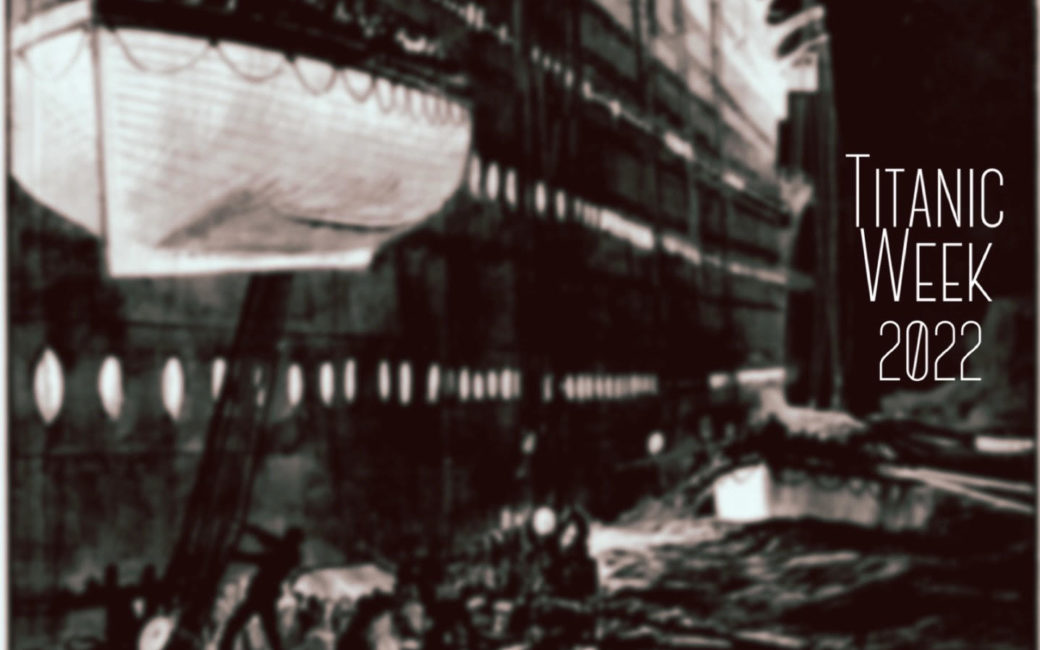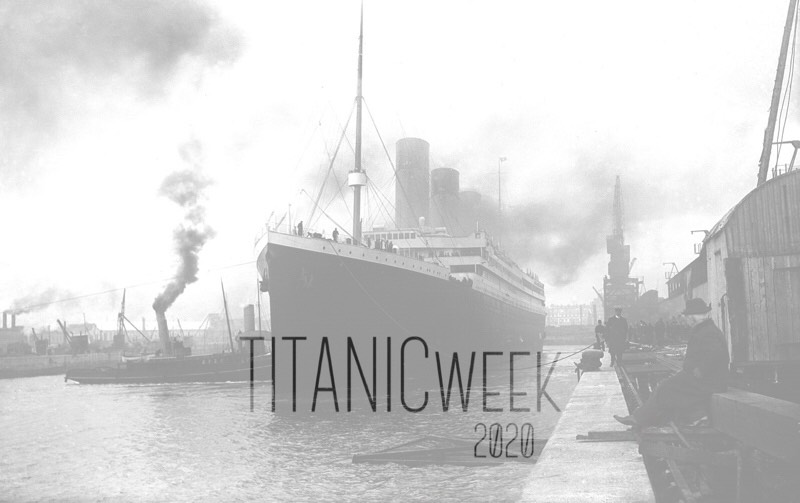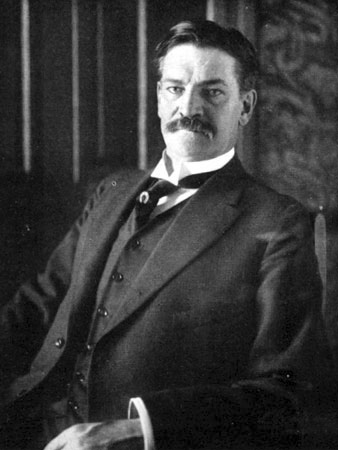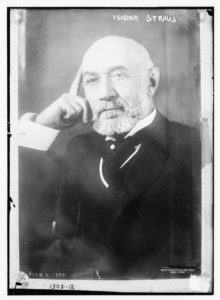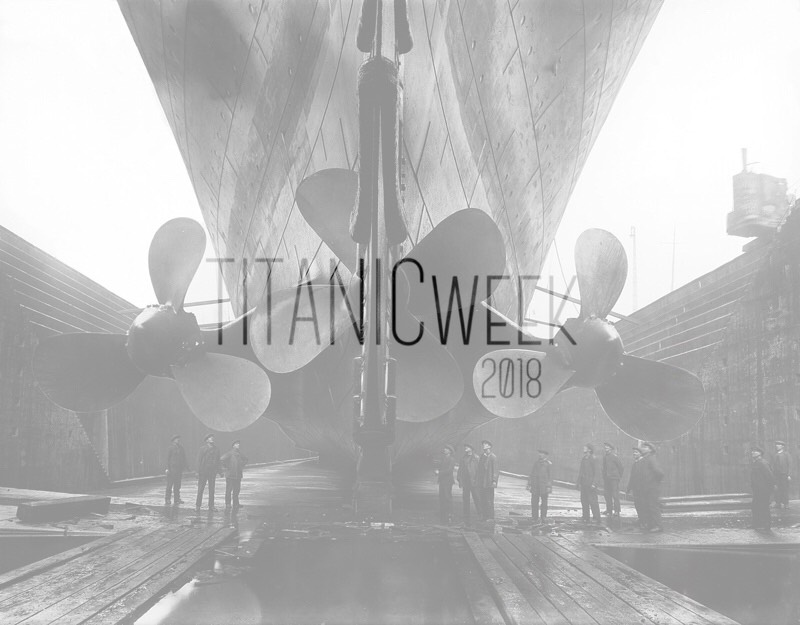"I'll Stay and Take My Chances": Clarence Moore
Clarence Moore left his home of Washington D.C. in March of 1912 with a singular goal: to get himself a whole lotta dogs.
Clarence was an accomplished man of business and a famed equestrian in the United States. According to the New York Times report dated April 16, 1912, "Socially he is one of the best-known men in Washington."
Clarence Moore had traveled across to England on this leisure trip in order to purchase foxhounds for the Loudoun Hunt at the brand new Rock Creek Hunt Club, which was back home in Virginia.
Per an interview with a member of the Rock Creek Hunt Club, published April 18th, 1912, "Clarence Moore was the most daring horseman I have ever seen, and yet one could not call him reckless. He knew every phase of fox hunting, which was his greatest hobby."
So, after purchasing 50 pairs of foxhounds, he and his manservant, Charles Harrington, booked First-Class passage back to America on Titanic. Clarence had originally intended for the hundred dogs to travel with him on Titanic, but ultimately elected for alternate passage for them.
Clarence and Charles boarded in Southampton, sans canines.

Clarence Moore. Courtesy of the Library of Congress.
PUBLIC DOMAIN
Clarence Moore’s dear friend, Major Archibald Butt, had also boarded Titanic that day. Archie, being a military aide to President William Howard Taft, was a fellow Washington elite. They sometimes played golf together.
Archie had arrived to the dining saloon promptly after boarding, it is said, in order to permanently reserve a table for the voyage—for himself, Clarence, and Archie’s housemate, painter Francis Davis Millet, who would board later in the day at Cherbourg.
The three men would have adjourned to the Palm Room following their meal, and likely played a hand of cards before retiring.
Clarence would spend his evenings on board with Archie and Millet, typically playing a game of whist well into the dark hours of the evening.
After lunch in the afternoon of Sunday, April 14, Clarence Moore and Archie Butt took a stroll about the promenade, despite the stark and sudden chill that was keeping so many other passengers indoors.
When Titanic struck the iceberg, Clarence was awake and at whist yet again with Archie, joined by William Carter and Harry Widener. Theirs was not the only party at card-playing; in fact, the group shared the room with professional card sharps such as George Brereton, who admitted to actively seeking a victim at the time. It is reported that Clarence Moore had at some point been indulging the tables in his personal tales of the West Virginian wilderness--especially his feat in guiding a newspaper reporter to an interview with Captain Anse Hatfield, of the notorious Hatfield & McCoy feud.
According to Archibald Gracie, the group seemed entirely engrossed and initially unbothered by the curious goings-on.
Clarence and Archie are reported to have stuck together as the sinking progressed, providing calm and steadfast reassurance to those women who were reticent to enter lifeboats. According to a number of survivor accounts, both men stood “in an unbroken line” with others who declined to enter lifeboats.
Repeatedly, Moore refused to take a place in one of the boats, the survivors who saw him say. His friend, Butt, knew that he was an oarsman, in fact, he realized that Clarence Moore could do most anything any true sportsman could, so he requested Moore to man an oar in one of the last lifeboats to leave the ship.
“No, major, I’ll stay and take my chances with you; let the women go,” Moore said to his companion according to Robert William Daniels, one of the survivors... “And he evidently stuck with Butt until death took them both,” said Mr. Daniels. “The two men jumped at the eleventh hour and were lost.”
Colonel Archibald Gracie also offered praise for the conduct of Major Archie Butt. It is reasonable to deduce that Clarence Moore aided similarly in the company of his friend.
Returning to a description of the scenes immediately after the Titanic crashed into the mammoth iceberg, Colonel Gracie told of the heroic work of Major Butt, John Jacob Astor, Clarence Moore, Jacques F. Futrelle, H. B. Harris, and other men, who stood aside in obedience to the law of the sea that the woman and children might live...
My last view of Major Butt---one that will live forever in my memory---was with that brave soldier coolly aiding the officers of the boat in directing the disembarkation of the women from that doomed ship. The recollection of him that is seared into my very brain is impressed by his last assertion of that manliness and chivalry so peculiarly his, that stately demeanor so well known to all Washingtonians. He died like the soldier and brave man he was.
It was reported that Clarence Moore and Archibald Butt jumped ship together "at the eleventh hour" as Titanic's boilers exploded.
The public eagerly awaited news of the famous Americans who were presumed lost in the sinking of the Titanic, particularly Major Butt, Clarence Moore, and other societal and affluent paragons such as John Jacob Astor.
Articles ran in newspapers with the 1912 equivalent of clickbait:
"Clarence Moore, Who May Have Lost His Life, Well Known in Capital."
"Moore's Partners Give Up Hope of Hearing From Him."
"Mrs. Moore Awaits Word from Husband."
Neither Clarence nor Major Butt survived. And their bodies were never found.
Clarence's wife, Mabelle, was repeatedly described as prostrate with grief "about Mr. Moore, who was aboard the Titanic and whose death seems certain."
Their conclusions have not been communicated to Mrs. Moore, who is prostrated.
Yesterday, Mrs. Moore attempted to make arrangements to have a steamer sent out to aid in the search for the lost and was only dissuaded with difficulty by friends of her husband, who assured her that everything possible was being done to save passengers, give the survivors comfort, and to obtain a complete list of the names of the survivors.
SOURCE MATERIAL
https://www.encyclopedia-titanica.org/titanic-victim/clarence-moore.html
https://www.encyclopedia-titanica.org/survivor-tells-heroism-clarence-moore.html
https://www.encyclopedia-titanica.org/col-gracie-dies-haunted-titanic.html
https://www.encyclopedia-titanica.org/washington-man-tells-harrowing-details-wreck.html
http://househistoryman.blogspot.com/2012/02/washington-dc-titanic-victim-clarence.html?m=1
